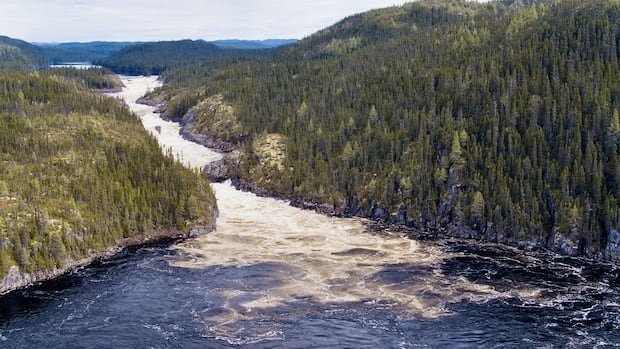A chorus of blackbird wings resonates through the fresh air. Beaver claws scrape on the rocky shoreline. The ice dam further upstream moans and groans against the swelling waters. Spring has arrived at the Magpie River.
Known as Muteshekau-shipu to the Innu people, the indigenous community whose ancestral lands envelop it, this river holds immense cultural significance. “Our grandmothers navigated this river, traversing its rapids,” Jean-Charles Piétacho, chief of the Innu of Ekuanitshit, expressed in French in the recent production “I Am the Magpie River.” He emphasized the river’s unique status, stating, “The Magpie is one of the few rivers that should remain untouched.”
In 2021, the Magpie River was granted legal personhood to safeguard its pristine waters. The documentary explores the consequences of this designation and how it could ensure the continued unobstructed flow of the Magpie’s powerful waters, crucial for the communities and wildlife that rely on them.
**Challenges Facing Canada’s Freshwater**
Originating between Labrador and Quebec, the Magpie River transforms from ice to water, cascading nearly 300 kilometers across a rugged terrain, navigating consecutive white water rapids towards the Gulf of St. Lawrence.
Rivers with the unimpeded scale of the Magpie are increasingly rare in Canada and globally. The documentary notes that less than a third of the world’s major rivers flow freely from their source to the sea. These water bodies, due to their potency, present opportunities for hydroelectric power generation.
While a small dam has existed on the Magpie since the 1950s near its confluence with the St. Lawrence, energy companies like Hydro-Québec have long aspired to expand damming operations on the Magpie to harness its energy potential. Recent years have witnessed the river’s significant rise during the spring thaw, with water levels surging by over 30 meters at certain points, pushing 950 cubic meters of water per second.
However, utilizing the Magpie for energy production would alter the landscape significantly, necessitating the construction of extensive infrastructure like roads, dikes, and hydro corridors. This transformation poses a threat to the diverse organisms inhabiting the river’s remote regions. “Freshwaters host the highest biodiversity globally,” attested Dalal Hanna, a Canadian freshwater and landscape ecologist, in the film.
According to the documentary, freshwater ecosystems are rapidly becoming among the most endangered worldwide, leading to the decline of animal populations at a rate twice that of marine or terrestrial creatures.
**Preserving the Magpie River**
For local residents and advocates, the peril facing the Magpie evokes memories of the fate that befell another Quebec river system.
The Romaine River, deeply intertwined with Innu culture and heritage, runs parallel to a network of portage trails ascending from the St. Lawrence River. In 2009, Hydro-Québec dammed the river to establish four hydroelectric power stations. Periodic flooding has drastically altered the landscape near the dams, disrupting animal habitats and natural pathways crucial for wildlife movement.
In the film, Chief Piétacho is seen near one of the power stations, juxtaposing a vast flooded area against an exposed riverbed where the once-mighty waters now barely trickle. “The Romaine was a wake-up call,” remarked Mathieu Bourdon, a guide who has led numerous excursions down the Magpie for Innu youngsters, emphasizing the unforeseen impact of the damming.
In 2018, Bourdon and Chief Piétacho forged an alliance that united local Indigenous and non-Indigenous authorities and environmental organizations to establish the Muteshekau-shipu Alliance. Together, they reached out to Yenny Vega Cárdenas, president of the International Observatory on the Rights of Nature, to champion the cause of safeguarding the Magpie River.
Cárdenas proposed granting the river legal personhood, a strategy successfully employed to protect ecosystems in Ecuador, New Zealand, Spain, and Colombia. “Legal personhood ensures that we cannot exploit the ecosystem but must protect it,” explained Cárdenas in the documentary. This conservation approach falls within the legal framework of nature’s rights, acknowledging that natural entities such as rivers and forests possess an inherent right to exist independently of human interactions.
Protecting natural systems like the Magpie also safeguards the human right to water, as highlighted by Cárdenas in discussions with the CBC. “By harming nature, we undermine our potential for individual and collective prosperity and harmonious coexistence with our surroundings. Our actions impact the environment and, consequently, ourselves.”
In 2021, the Innu Council of Ekuanitshit and the regional municipal council of Minganie passed concurrent resolutions, endowing the Magpie River with the groundbreaking legal personhood status, granting it nine fundamental rights:
– The right to live, exist, and flow.
– The


